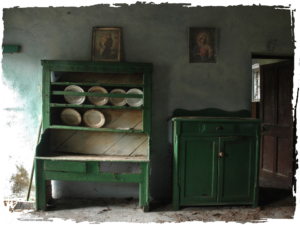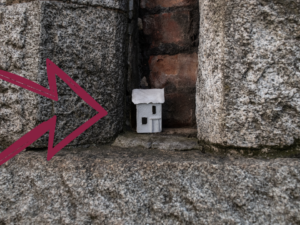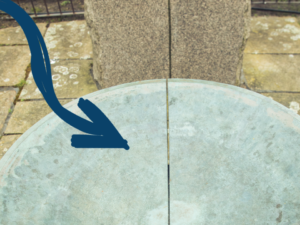
Kieran Murray’s photography evokes nostalgia from the off.
The rich palette of worn colours; the textures of paint, rust and plaster, take us to a time way back in -or slightly before- our memory, where things are familiar, but distressed; recognisable, but transforming.
Originally introduced to the Festival by Catherine Harvey -producer and presenter of BBC Radio 4’s Tongue and Talk: The Dialect Poets – Kieran’s collection speaks of modern Ireland’s rural lives, but also of historical Ireland’s agriculture, heritage and loss. His affection for the subject seeps in to the work. We find ourselves clamouring to find a memory we can attach to that ewer, that horseshoe or that Christmas envelope. Here, Kieran helps us explore the world he is showing us in his images.
Times Past
I have been an enthusiastic photographer for over 60 years. In pursuit of my hobby I have travelled extensively throughout Europe, America and Asia. Wonderful and exciting places, yes; but I wouldn’t swap any of them for home (where most of my photography is done).
Ireland is renowned for its landscapes; its dramatic and ever-changing light, its magnificent Atlantic coastline and so much more. As well as photographing these, I carry other little projects and themes in mind; something to do when the weather is not to my liking. One of these would be capturing dereliction and decay, which can sometimes be more attractive and eye catching than the original. Throughout Ireland there are many ruins of once magnificent castles and stately homes. However, my favoured subjects are more humble: the not so recently abandoned old cottages and farmhouses, still containing the relics and evidence of previous residents.
Origins
My own origins would have been in such places. Both my grandfathers were small hold farmers. To gain entrance to one of these cottages now is like taking a step back in time, to a childhood when holidays were spent in homes such as these. Memories come flooding back. No electricity, oil lamps instead; no toilets; out to the fields; no running water. This was retrieved from the pump at the edge of the village or well down the lane. Cooking was done over an open turf fire, with a crane for adjusting the height of the pot. And of course, there were the holy pictures.
By the time I started photographing in these houses the Rural Electrification Scheme had brought electricity into almost every home in Ireland. Done to stem the flow of people from the country to the towns and cities, flow may have slowed, but it continued. As did the emigration of people seeking advancement and better conditions away from the fields and the penury of rural life. This has led, in part, to the number of houses ruined and left to decay throughout the countryside. At the last count there were about 90,000; most of them ruined beyond repair. These can be good subject matter for a photographer in the right lighting conditions. For my purposes- I am looking for ones more recently deserted; with the remnants of the life lived there still apparent.
Abandoned
And why, you might ask, are they abandoned if they have recently been lived in? I have seen them lie untouched for thirty years. We can only surmise. Perhaps the house was not abandoned. Maybe the the last one to live there passed away? Or was taken to hospital and from there to a nursing home to languish for a few more years before passing on? Then, nobody can find a will, or the deeds to the property.
This is not uncommon in rural Ireland. Maybe there are no relatives in the area to deal with these matters. They may have emigrated many years before; to America, to Australia, perhaps even to Liverpool. If they can be contacted, it could still take years to sort out ownership. Then the unfortunate new owner may be liable to tax on it, but doesn’t have the wherewithal or the inclination to pay it. So, there are all sorts of reasons why the houses may lie abandoned for years, all the while sinking further into disrepair.
Breaking and entering?
Most of these houses are sensibly locked or boarded up and I must leave them, regardless of what I see through the window. I have never been guilty of breaking and entering… but, if the front door is tied just by a piece of string, as it often is, or a piece of twisted wire, or if there are open windows, I will let myself in. Sometimes the front door is securely locked and the back door is gone. Sometimes there are no doors at all.
I did once resort to subterfuge. I could see through the window there were dressers and ‘delph’, well worth a picture or two. The house was for sale. I called to the estate agent and -posing as a potential buyer- enquired whether he might ask the owner to leave the key outside for me to get in and have a look at the place. It was arranged and it all worked out very well.
Affection
I do have a great respect and affection for the people who lived in the house before I arrive, uninvited. Thus, I do try to behave with due deference to them. And I never try to arrange found objects to in any way diminish their dignity or character. Objects found, like twenty-first birthday presents, musical instruments, children’s jigsaws, sympathy cards, letters from abroad and tickets for a dance all tell stories of great normality. Of joyful events and also of sadness. There would have been laughter for the people in these rooms… and there would have been tears.
When you think about it, they’re just like the rest of us today. Except -mainly- we don’t have the holy pictures.
Of a vast collection, we have selected 50 of Kieran’s images to run as a digital show. Click here to see it (optimised for full exhibition during #LIF2022, 20-30 Oct 2022).


